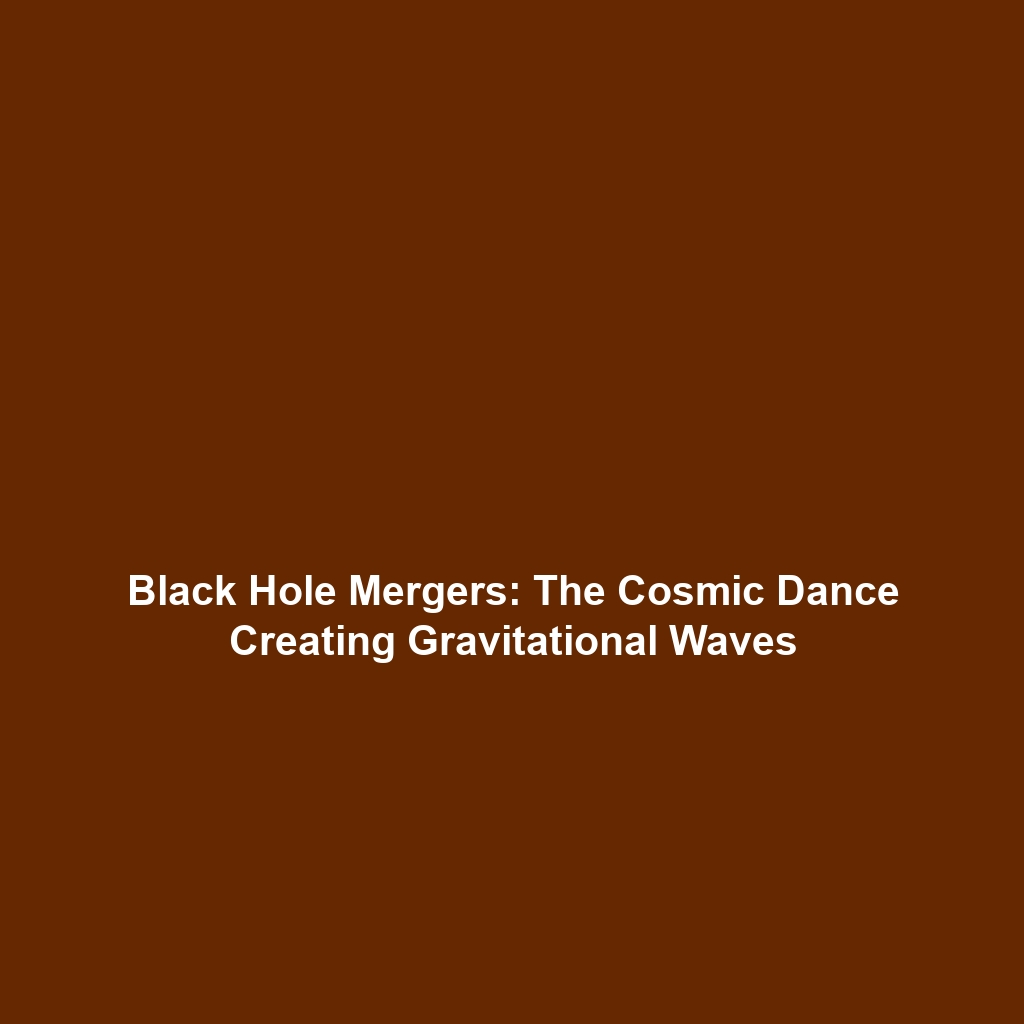Hawking Radiation: How Black Holes Can Emit Radiation and Lose Mass Over Time
Introduction
Hawking Radiation is a groundbreaking theoretical prediction made by physicist Stephen Hawking in 1974. This phenomenon fundamentally alters our understanding of black holes, suggesting that these cosmic giants are not entirely black but can emit radiation, leading to a gradual loss of mass over time. Such an emission contradicts the traditional belief that nothing can escape a black hole’s gravitational pull. The significance of Hawking Radiation not only reshapes astrophysical models but also offers insights into the fate of black holes, presenting profound implications for the future of cosmology and fundamental physics.
Key Concepts
What is Hawking Radiation?
Hawking Radiation arises from quantum effects near the event horizon of black holes. Specifically, virtual particle pairs can pop into existence, one of which falls into the black hole while the other escapes, observed as radiation. This process can lead to a loss of mass, effectively causing the black hole to evaporate over astronomical time scales.
Information Paradox
The notion of Hawking Radiation raises critical questions about the information paradox, which ponders whether information that falls into a black hole disappears forever. This paradox challenges the foundations of quantum mechanics and our understanding of information conservation in the universe.
Applications and Real-World Uses
While Hawking Radiation is predominantly theoretical, it fosters significant applications in cosmology and theoretical physics:
- Quantum Computing: Insights from Hawking Radiation may inspire new algorithms or models in the field of quantum computing.
- Astrophysical Models: Understanding Hawking Radiation can enhance models of galaxy formation and black hole interactions within the universe.
- Particle Physics: The principles behind Hawking Radiation could inform experiments in high-energy particle physics, particularly in understanding fundamental forces.
Current Challenges
Despite its intriguing implications, several challenges hinder the empirical study and practical application of Hawking Radiation:
- Detecting Hawking Radiation is extremely difficult due to its faintness compared to cosmic background radiation.
- Theoretical models require robust support from experimental data, which currently poses significant limitations.
- Debates about the information paradox complicate consensus on black hole physics.
Future Research and Innovations
The future of research on Hawking Radiation is ripe with promise. Ongoing studies may lead to:
- Advanced Simulations: Innovations in computational technologies could improve simulations of black hole environments, potentially observing simulated Hawking Radiation.
- Gravitational Wave Astronomy: Future advancements in gravitational wave detection may reevaluate associations between gravitation and black hole emissions.
- Unification of Physics: Breakthroughs in understanding Hawking Radiation may contribute to a unified theory that bridges quantum mechanics and general relativity.
Conclusion
In summary, Hawking Radiation provides a fascinating glimpse into the complex behavior of black holes and their potential for mass loss over time. As research continues, the implications of Hawking Radiation will likely reshape our understanding of the cosmos. For further exploration into topics like black hole thermodynamics and quantum gravity, refer to our dedicated sections on these subjects.



